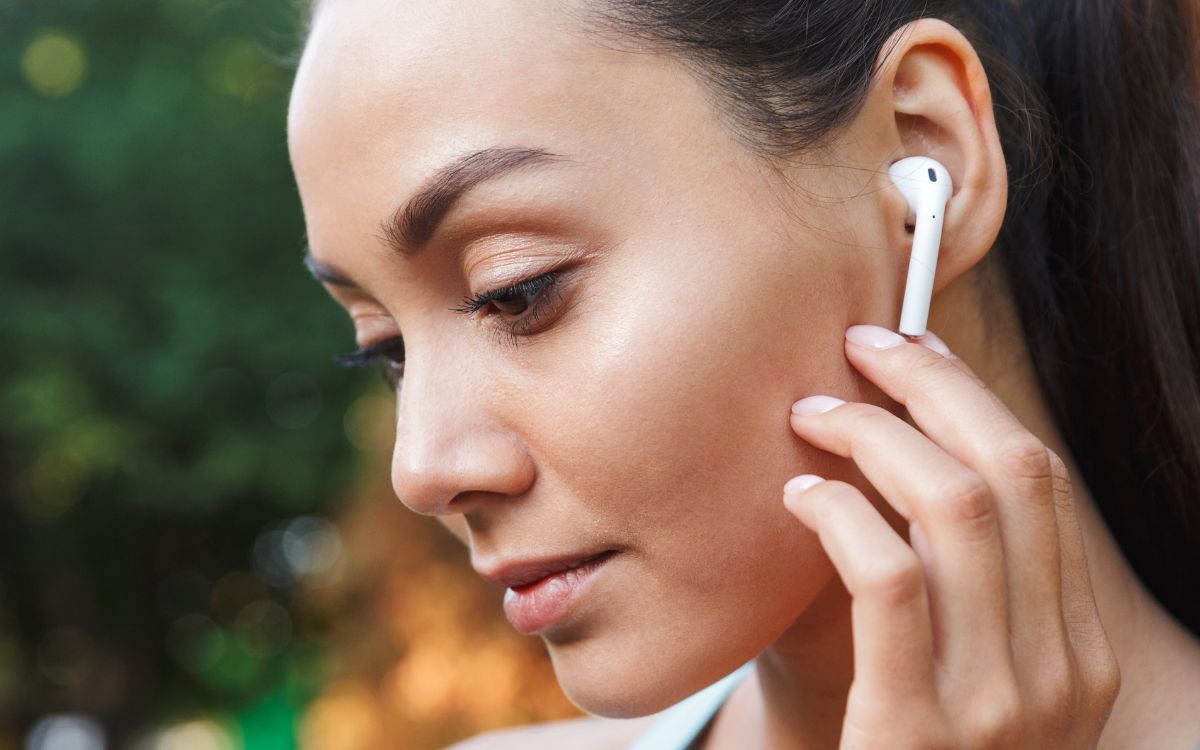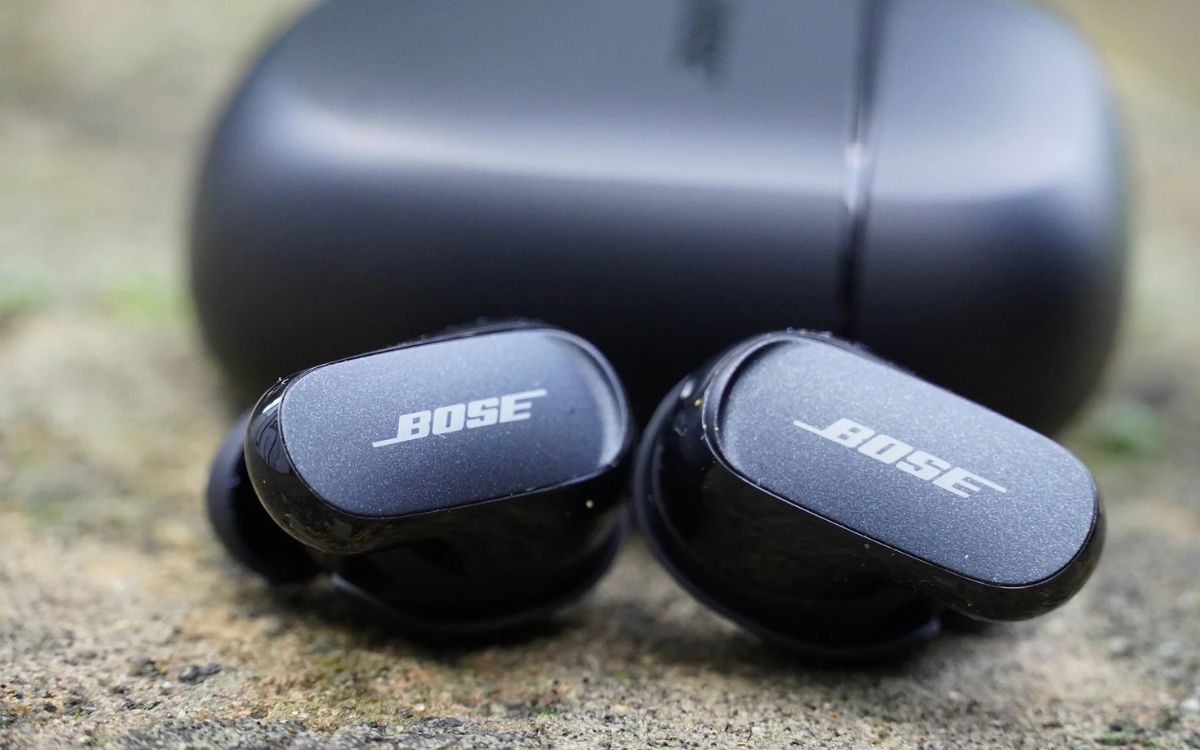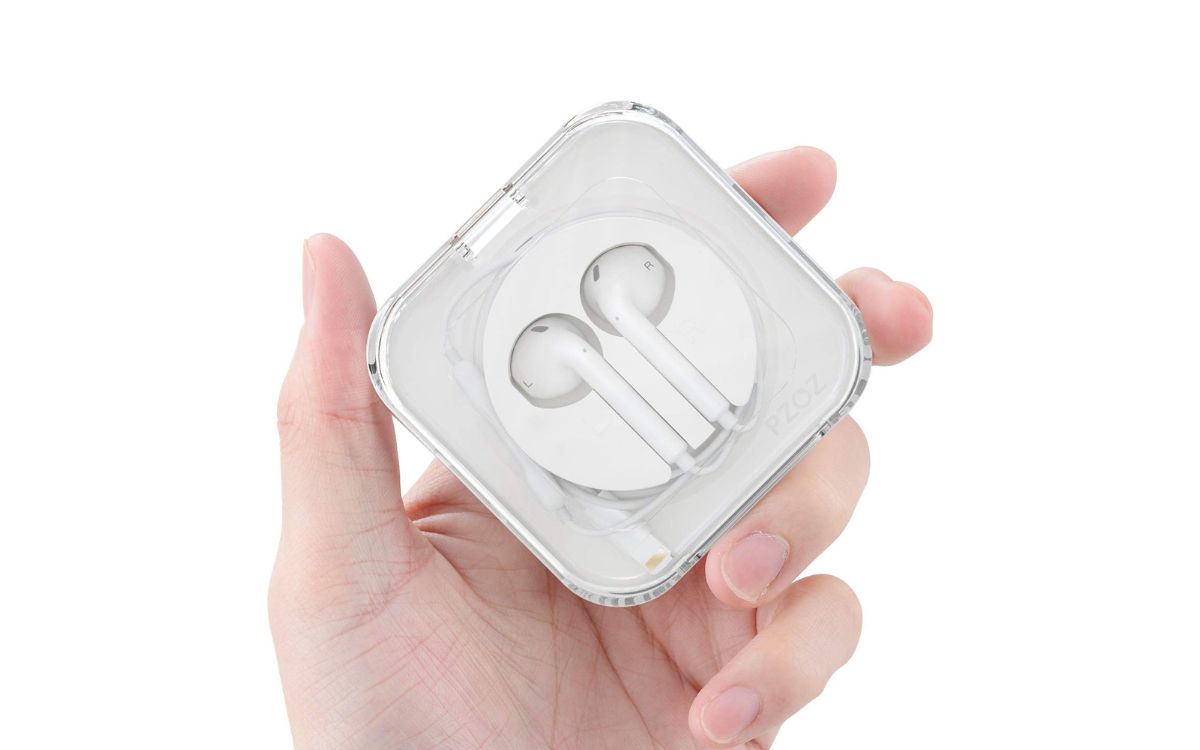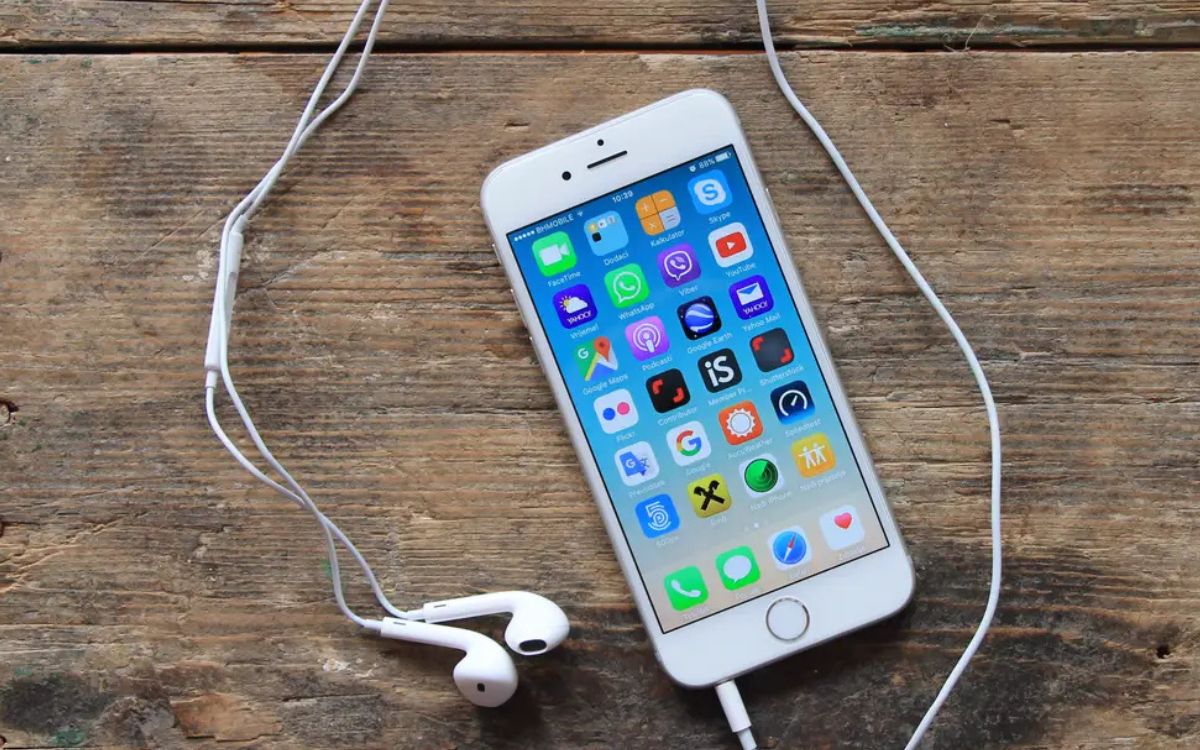Home>Devices & Equipment>Earbuds>What Happens If You Wear Earbuds Too Much


Earbuds
What Happens If You Wear Earbuds Too Much
Published: November 15, 2023
Discover the consequences of excessive earbud usage. Find out what happens to your ears when you wear earbuds for prolonged periods. Learn more today.
(Many of the links in this article redirect to a specific reviewed product. Your purchase of these products through affiliate links helps to generate commission for AudioLover.com, at no extra cost. Learn more)
Table of Contents
Introduction
Earbuds have become an essential accessory for many people, providing a convenient way to enjoy music, podcasts, or make hands-free calls. They are compact, portable, and offer a personalized audio experience. However, like any technology, excessive use of earbuds can have negative impacts on our health and well-being.
In this article, we will explore the potential risks of wearing earbuds for extended periods and delve into the various ways they can affect our ears, health, and overall quality of life. While there is no denying the convenience and enjoyment that earbuds bring, it’s important to be aware of the potential consequences of overuse.
Whether you’re an avid music listener, a fitness enthusiast who relies on earbuds during workouts, or simply someone who enjoys the convenience of hands-free communication, it’s crucial to find a balance and take steps to protect your hearing and overall ear health.
So, let’s dive into the potential risks and discuss how wearing earbuds for too long can impact our well-being.
Potential Risks of Excessive Earbud Use
While earbuds can enhance our audio experience and provide convenience, there are several potential risks associated with their excessive use. Understanding these risks can help us make informed decisions about how we use our earbuds and take steps to minimize any negative effects.
One of the primary concerns of wearing earbuds for extended periods is the potential for hearing damage. Earbuds sit directly in the ear canal, close to the eardrum, and deliver sound waves directly into the ear. When played at high volumes, these sound waves can damage delicate structures within the ear, leading to hearing loss or other auditory issues. It’s important to be mindful of the volume level and duration of earbud use to minimize the risk of long-term damage.
In addition to hearing damage, excessive earbud use can impact our overall ear health. The prolonged presence of earbuds in the ear canal can create a warm and moist environment, which can promote the growth of bacteria and fungus. This can increase the risk of ear infections, causing discomfort, pain, and potential damage to the ear. Regular cleaning of earbuds and limited use can help mitigate this risk.
Furthermore, relying too heavily on earbuds can interfere with our spatial awareness. The immersive audio experience they provide can make us less aware of our surroundings, increasing the risk of accidents and injuries. This is particularly concerning when using earbuds while walking, running, or engaging in other activities where situational awareness is crucial.
Excessive earbud use can also have negative effects on concentration and productivity. Constantly having audio input directly into our ears can be distracting, making it difficult to focus on tasks or engage in effective communication. Additionally, constantly being plugged in and isolated from our environment can lead to decreased social interaction and a sense of detachment from the world around us.
It is essential to note that the risks of excessive earbud use can vary from person to person, depending on factors such as volume levels, duration of use, and individual susceptibility. However, understanding these potential risks allows us to be proactive in protecting our hearing and overall well-being.
Possible Hearing Damage
One of the most significant concerns associated with excessive earbud use is the potential for hearing damage. The close proximity of earbuds to the eardrum and inner ear makes them capable of delivering sound waves directly into the auditory system, which can have long-term consequences if proper precautions are not taken.
When we listen to music or other audio through earbuds at high volumes for extended periods, the sound waves can cause damage to the delicate structures of the inner ear. These structures, including the cochlea and hair cells, are responsible for transmitting sound signals to the brain. Overexposure to loud sound can lead to permanent hearing loss or other hearing-related issues such as tinnitus (ringing in the ears).
It’s important to understand that the risk of hearing damage increases with higher volume levels and longer durations of exposure. The World Health Organization (WHO) recommends limiting daily exposure to sounds above 85 decibels (dB) to protect our hearing. However, many modern devices can produce sound levels well above this threshold, and the compact design of earbuds often leads to closer proximity to the eardrum, amplifying the potential damage.
To protect your hearing, it is crucial to follow safe listening practices when using earbuds. Start by keeping the volume at a moderate level, where you can still hear external sounds without straining. Additionally, take periodic breaks from wearing earbuds to give your ears a rest and minimize the risk of cumulative damage.
Some modern earbud models come with built-in features like volume limiters, which can help prevent excessive sound exposure. Consider using such devices or using external volume control settings on your device to ensure that you don’t unknowingly expose yourself to dangerously loud sounds.
If you experience any signs of hearing loss, such as difficulty understanding conversations, ringing in the ears, or muffled sounds, it is important to seek professional medical advice as soon as possible. Early intervention can prevent further deterioration and help manage any existing hearing issues.
Overall, while earbuds offer convenience and enjoyment, it is vital to prioritize the long-term health of our hearing. By being mindful of volume levels, taking breaks, and seeking professional advice when needed, we can minimize the risk of hearing damage associated with excessive earbud use.
Impact on Ear Health
Excessive use of earbuds can have various effects on our overall ear health. The prolonged presence of earbuds in the ear canal can create a warm and moist environment, which can lead to several issues if proper precautions are not taken.
One potential consequence of extended earbud use is an increased risk of earwax buildup. Earwax plays a crucial role in protecting the ear canal and preventing debris and foreign particles from entering the inner ear. However, when earbuds are constantly inserted into the ear, they can push the earwax deeper into the canal, causing it to accumulate and potentially block the ear canal. This can lead to discomfort, decreased hearing, and an increased risk of ear infections.
Speaking of infections, the warm and moist environment created by wearing earbuds for extended periods can facilitate the growth of bacteria and fungi. This can increase the risk of developing ear infections, such as swimmer’s ear (otitis externa). Symptoms of ear infections can include pain, itching, discharge, and temporary hearing loss. It is important to maintain good hygiene practices, including regular cleaning of earbuds and avoiding prolonged use in order to reduce the likelihood of developing an ear infection.
Additionally, the constant presence of earbuds in the ears can cause irritation and discomfort. This may manifest as soreness, itching, or even pain in the ear canal. Extended use can also lead to pressure sores on the delicate skin of the ear, particularly if the earbuds are poorly fitting or if they are not cleaned regularly. Taking breaks from using earbuds and ensuring a proper fit can help alleviate these issues and promote better ear health.
To maintain healthy ears while using earbuds, it is advised to clean earbuds regularly to remove any accumulated wax or debris. This can be done using a soft cloth or cotton swab moistened with a mild cleaning solution. It’s important to note that earbuds should never be inserted into the ear canal for cleaning, as this can push the earwax further and potentially damage the ear. Instead, focus on cleaning the exterior surfaces of the earbuds.
Overall, while earbuds can provide convenience and entertainment, it’s crucial to prioritize our ear health. By practicing good hygiene, avoiding prolonged use, and seeking medical attention if any discomfort or issues arise, we can help protect our ears and maintain optimal ear health.
Increased Risk of Ear Infections
Wearing earbuds for extended periods can increase the risk of developing ear infections, particularly in the external ear. The warm and moist environment created by the presence of earbuds in the ear canal provides a conducive breeding ground for bacteria and fungi, which can lead to infection if proper precautions are not taken.
One common type of ear infection associated with earbud use is known as swimmer’s ear, or otitis externa. Swimmer’s ear occurs when water or moisture remains trapped in the ear canal, creating an ideal environment for bacterial or fungal growth. The prolonged use of earbuds can contribute to this condition as it can prevent proper air circulation and trap sweat within the ear canal.
The symptoms of swimmer’s ear include ear pain, redness, itching, discharge, and temporary hearing loss. If left untreated, the infection can worsen, leading to more severe symptoms, such as swelling, inflammation, and even complications that require medical intervention.
To minimize the risk of ear infections while using earbuds, it is crucial to maintain good hygiene practices. Regularly clean your earbuds to remove any accumulated wax, dirt, or moisture. Avoid sharing earbuds with others to prevent the spread of bacteria or fungi.
Additionally, take breaks from using earbuds to allow your ears to breathe and reduce moisture build-up. If you engage in activities that cause excessive sweating or exposure to water, such as exercising or swimming, make sure to dry your ears thoroughly afterwards to prevent moisture from lingering in the ear canal.
If you experience symptoms of an ear infection, it is important to seek medical attention. A healthcare professional can properly diagnose the infection and recommend appropriate treatment, which may include eardrops, oral antibiotics, or other interventions depending on the severity of the infection.
By practicing good hygiene, taking breaks, and seeking prompt medical attention when needed, you can reduce the risk of ear infections associated with excessive earbud use. Remember that prevention is key to maintaining healthy ears and enjoying your audio experience without compromising your ear health.
Interference with Spatial Awareness
Excessive use of earbuds can interfere with our spatial awareness, making us less aware of our surroundings and potentially increasing the risk of accidents and injuries. This is primarily due to the immersive audio experience provided by the earbuds, which can create a sense of detachment from the external environment.
When wearing earbuds, particularly noise-cancelling ones, we may fail to hear important auditory cues from our surroundings, such as honking cars, approaching footsteps, or warning signals. This can be especially risky when engaging in activities that require situational awareness, such as walking or jogging outdoors, cycling, or crossing busy streets.
Furthermore, relying too heavily on earbuds for audio cues can distract our attention away from the visual environment. Our brain may become focused on the audio input, leading to a decreased level of attention and awareness of potential hazards in our surroundings.
Interference with spatial awareness can have serious consequences, as it compromises our ability to react to potential dangers. For example, not hearing an approaching vehicle while crossing the road can lead to a life-threatening situation.
To mitigate the impact on spatial awareness, it’s important to be mindful of our surroundings when using earbuds. Consider using open-ear or bone conduction headphones that allow you to hear ambient sounds while still enjoying your audio content. Alternatively, lower the volume and use only one earbud when engaging in activities that require heightened awareness.
Additionally, it’s crucial to assess the risk level of your environment before using earbuds. In high-risk situations, such as when walking in a busy city or engaging in outdoor activities with potential hazards, it may be best to avoid wearing earbuds altogether to ensure full attentiveness to your surroundings.
By being aware of the potential interference with spatial awareness and taking necessary precautions, we can strike a balance between enjoying our audio experience and staying alert to the world around us. Prioritizing our safety and that of others should always be a top priority.
Negative Effects on Concentration and Productivity
Excessive use of earbuds can have negative effects on our concentration and productivity, impacting our ability to focus on tasks and engage in effective communication.
One of the key ways in which earbuds can affect concentration is by providing a constant source of audio input. While this may initially seem beneficial for staying focused, it can actually be quite distracting. The brain may struggle to process both the external environment and the audio content from the earbuds simultaneously, leading to reduced concentration and increased mental fatigue.
Additonally, constant audio input from earbuds can hamper productivity by interrupting our workflow. The temptation to constantly switch songs or podcasts and the need to adjust volume levels can disrupt our train of thought, making it difficult to maintain a steady rhythm and flow in our work.
Another aspect to consider is the potential impact on interpersonal communication. When wearing earbuds, we may appear less approachable or available for conversation, thus hindering effective communication in social settings. This can lead to feelings of disconnection and isolation from those around us, which can ultimately affect our overall well-being.
To mitigate the negative effects on concentration and productivity, it is important to establish healthy boundaries around the use of earbuds. Consider setting dedicated periods of time for focused work or tasks without wearing earbuds, allowing your brain to fully engage in the task at hand. Additionally, practice active listening when engaging in conversations or participating in group settings, ensuring that your attention is fully present and not divided between external sounds and the audio in your ears.
If you find it challenging to concentrate or feel distracted by the constant input of earbuds, try alternative methods to enhance concentration and productivity. This may include using instrumental music or white noise to create a conducive environment for work or utilizing noise-cancelling earbuds to block out external distractions without the need for constant audio input.
By finding a balance between earbud use and focused concentration, we can optimize our productivity, enhance our ability to communicate effectively, and create a more conducive environment for both work and social interactions.
Social Isolation and Decreased Communication
An often overlooked consequence of excessive earbud use is the potential for social isolation and decreased communication. While earbuds provide a personal audio experience, they can also create a barrier between us and the people around us.
When wearing earbuds, we may unintentionally signal to others that we are not available for conversation or interaction. It can be seen as a social cue that we prefer solitude or are disconnected from our surroundings. This can lead to missed opportunities for social engagement, making us feel isolated and detached from our social circles.
In social settings, wearing earbuds can also hinder effective communication. If others perceive that we are not fully present or actively listening, it can discourage them from engaging in conversations with us. This can lead to strained relationships and decreased social connections.
Furthermore, relying heavily on earbuds for entertainment or information can reduce our engagement with the world around us. Instead of observing and interacting with our environment, we may become consumed by the audio content in our earbuds, missing out on valuable experiences and potential social interactions.
To maintain healthy social connections and avoid social isolation, it’s important to be mindful of our earbud usage in social settings. Consider removing your earbuds or keeping one ear open when interacting with others, signaling openness to conversation and engagement. Prioritize face-to-face interactions and attentive listening to foster deeper connections and meaningful communication.
In situations where using earbuds is necessary or preferred, such as during travel or alone time, it’s still important to find a balance. Set designated times for social interaction and maintain awareness of the people around you. Being mindful of your surroundings and actively seeking opportunities for social engagement can help prevent feelings of isolation and nurture stronger social connections.
Remember, maintaining healthy social connections is vital for our overall well-being. While earbuds can provide entertainment and convenience, it’s important to prioritize genuine human interaction and nurture the relationships that enrich our lives.
Tips for Limiting Earbud Use
While earbuds can provide convenience and entertainment, it’s important to establish healthy habits and limit their use to mitigate potential risks. Here are some tips to help you strike a balance and protect your hearing and overall well-being:
- Set time limits: Establish a maximum daily or weekly duration for wearing earbuds. This can help prevent excessive use and give your ears a break.
- Take regular breaks: Give your ears rest periods by taking breaks from wearing earbuds throughout the day. Use these breaks to engage with your environment and allow your ears to recover.
- Limit volume levels: Keep the volume at a moderate level where you can still hear external sounds without straining. The general rule of thumb is the 60/60 rule: listening at 60% volume for no longer than 60 minutes a day.
- Use noise-cancelling or open-ear headphones: Consider using headphones that allow you to enjoy your audio content without completely blocking out external sounds. This can help maintain situational awareness and reduce the need for high volume levels.
- Clean your earbuds regularly: Regularly clean your earbuds to remove any accumulated wax, dirt, or bacteria. This can help prevent ear infections and maintain good ear health.
- Practice safe listening in noisy environments: In noisy environments, such as concerts or construction sites, consider using ear protection in combination with lower volume levels to reduce the risk of excessive sound exposure.
- Engage in other forms of entertainment: Explore alternative forms of entertainment that do not rely on constant earbud use. Engage in activities such as reading, going for walks, or spending time with loved ones to diversify your leisure time.
- Be mindful of your surroundings: When wearing earbuds in public, be aware of your surroundings and selectively use one earbud or keep the volume low to remain attentive to potential hazards and social interactions.
- Model healthy habits: If you have children or younger siblings, set a positive example by demonstrating healthy earbud use and educating them about the potential risks of excessive volume or duration.
- Listen to your body: Pay attention to any signs of discomfort, pain, or changes in hearing. If you experience any issues, seek professional medical advice to ensure early intervention and proper treatment if necessary.
Remember, it’s essential to prioritize your hearing health and overall well-being. By following these tips and being mindful of your earbud usage, you can continue to enjoy your audio experience while minimizing the risks associated with excessive use.
Conclusion
Earbuds have undeniably revolutionized the way we enjoy music, podcasts, and communicate hands-free. However, it is important to be aware of the potential risks associated with excessive earbud use and take steps to protect our hearing and overall well-being.
From the potential for hearing damage to the impact on ear health and increased risk of ear infections, prolonged and excessive use of earbuds can have negative consequences. It can also interfere with our spatial awareness, concentration, productivity, and social connections.
To mitigate these risks, it is crucial to establish healthy habits. Limiting earbud use, taking regular breaks, setting volume limits, and practicing safe listening practices are essential steps to protect our ears. Additionally, being mindful of our surroundings, engaging in alternative forms of entertainment, and actively nurturing social connections can contribute to overall well-being.
Remember, our hearing is precious, and it’s crucial to prioritize its health. By incorporating these tips into our daily lives, we can enjoy the benefits of earbuds while minimizing the potential drawbacks.
So, let’s embrace a balanced approach to earbud usage, where we can enjoy our audio content responsibly, safeguard our hearing, and stay connected with the world around us.











